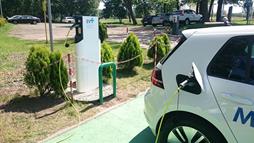Ensto, Ericsson and DNA jointly test next generation communications in an electric vehicle charger
11-02-2018
Visit the Ensto Chago (UK) website for more information on Ensto, Ericsson and DNA jointly test next generation communications in an electric vehicle charger




